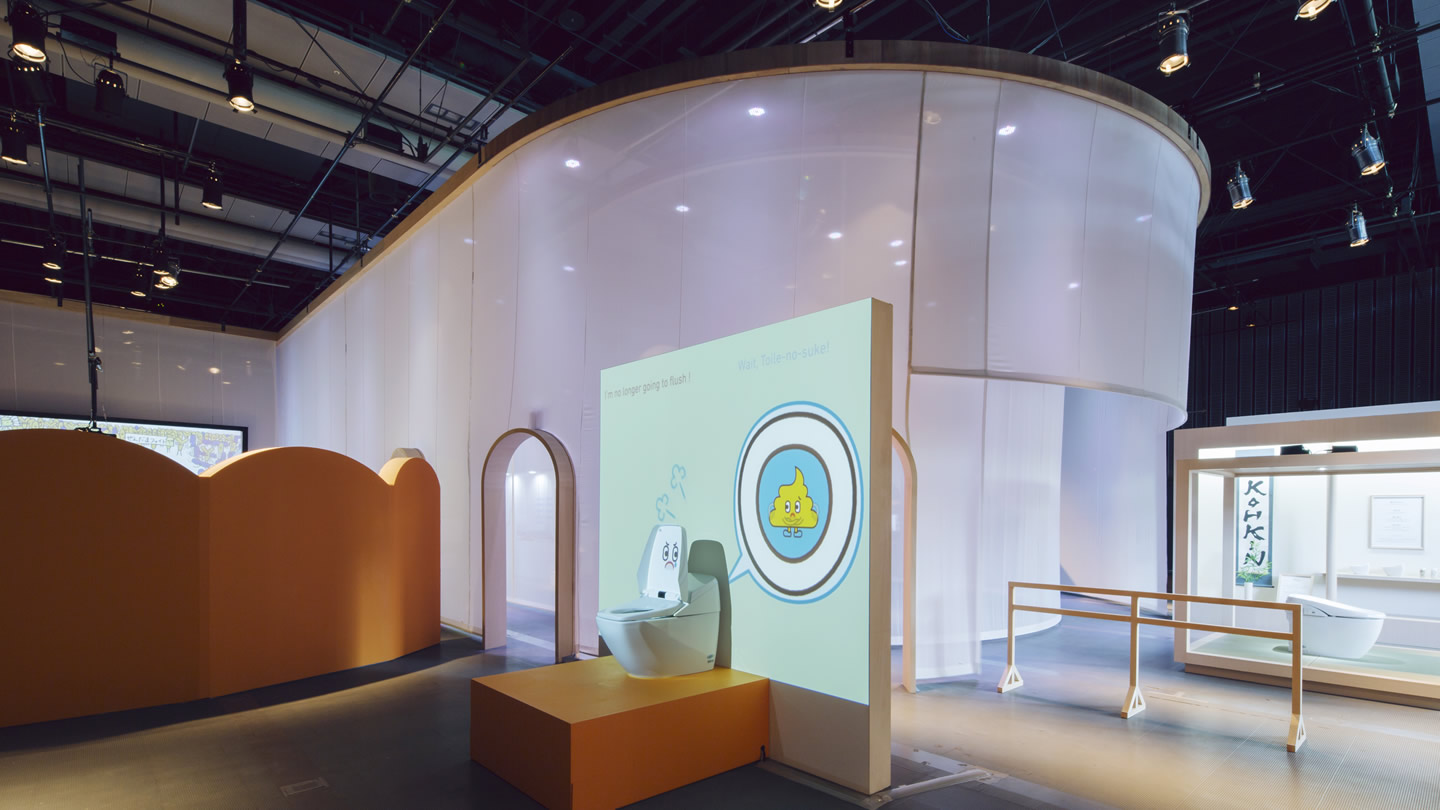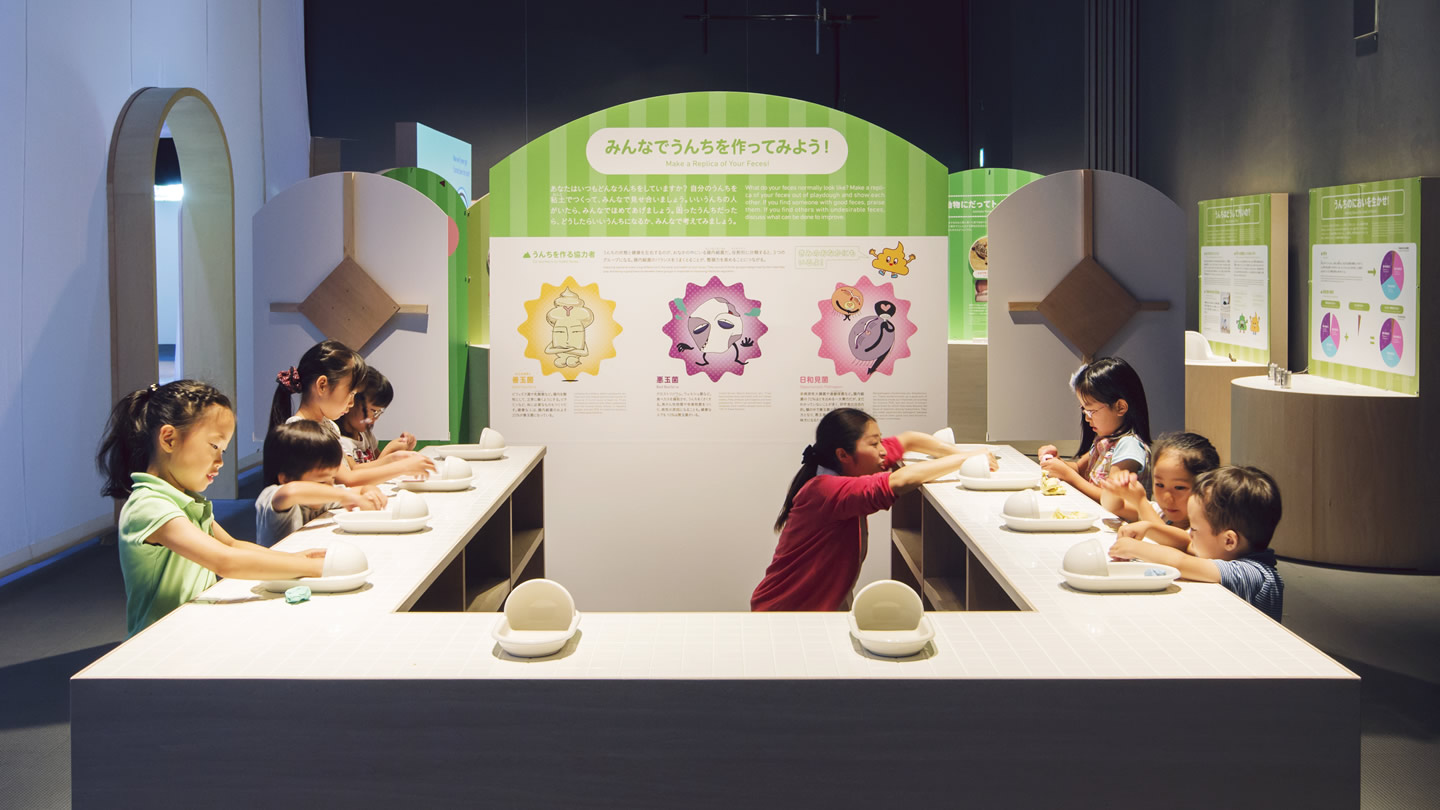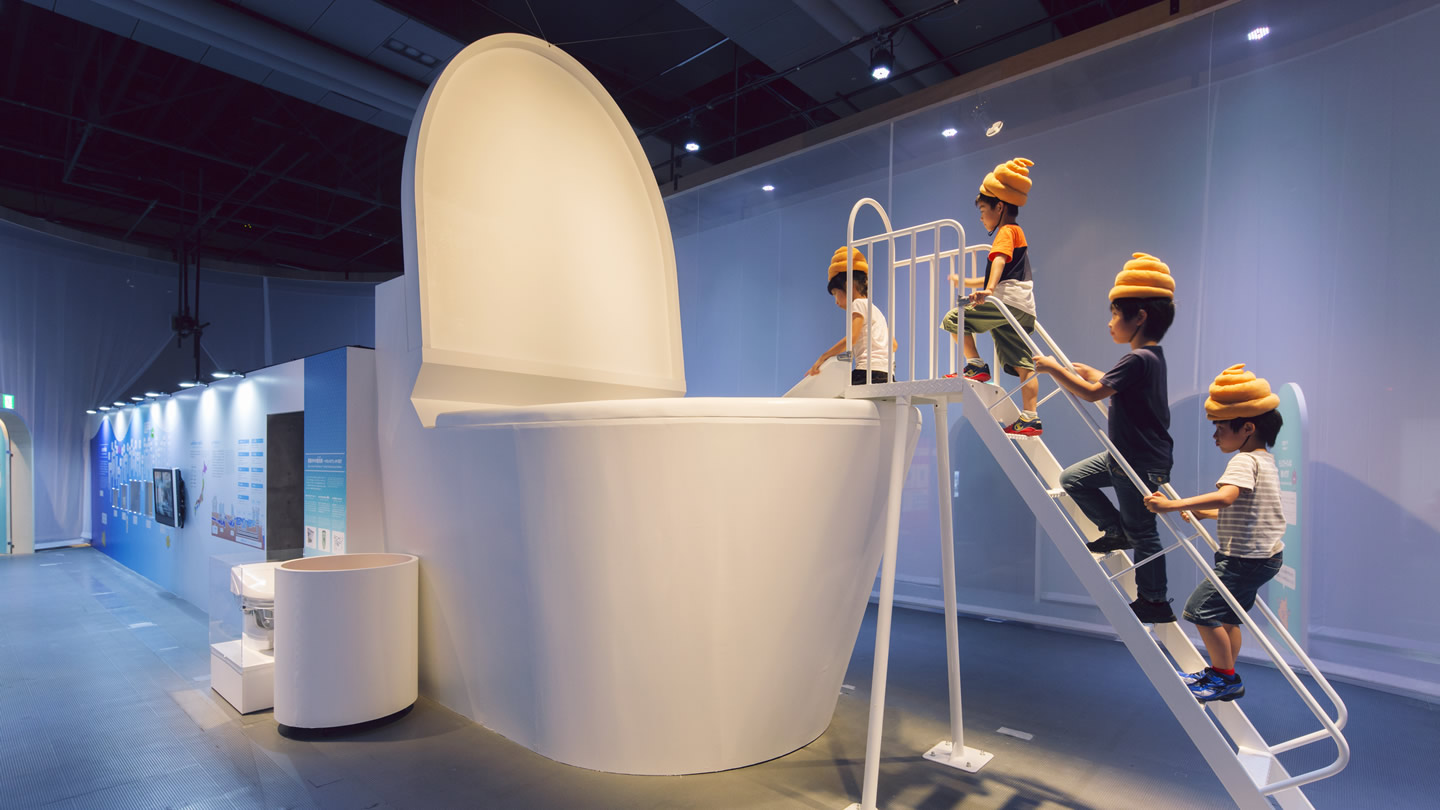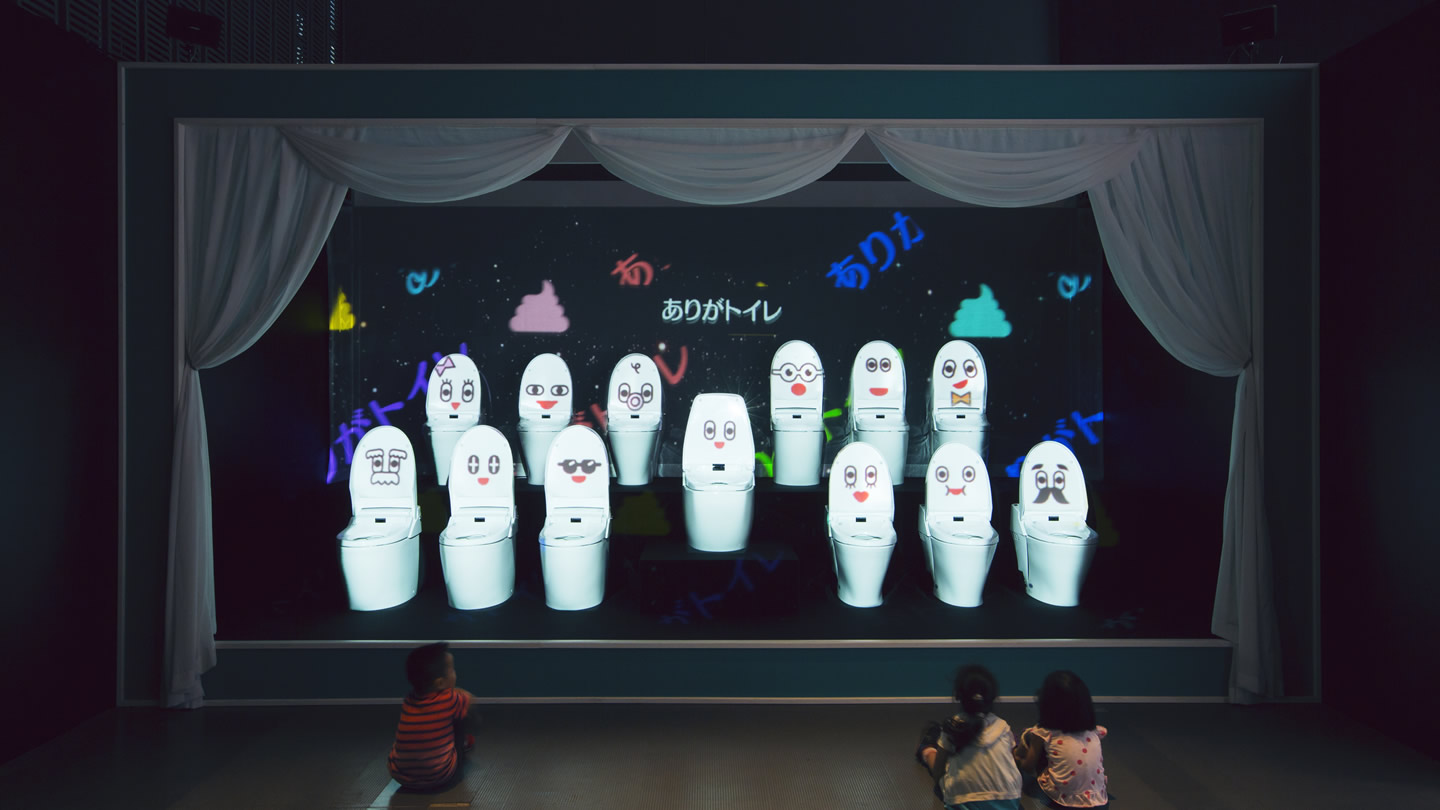This exhibition has ended.
Exhibition Outline
This exhibition focuses on the "toilet", a topic not usually talked about openly. Studying from such topics as like the problem of feces and the environment, this exhibition will try to discover what the environment-friendly toilet is and what the ideal toilet is.
Toilets in Japan are clever and sophisticated, with a lid that automatically opens and shuts, and with a self - cleaning function. Thanks to them, we can lead a comfortable and clean life.
There are, however, challenges surrounding the toilet in Japan: some children have trouble using the school toilets because of embarrassment or some other reasons; and the problem of excretion poses a great burden to caretakers.
Turning our attention to the world, we see the fact that about 2.5 billion people in the world are unable to use toilets and many children lose their lives due to lack of sanitation. A pleasant egestion experience involves human dignity and a person's ideal toilet differs according to age, culture, and their living environment.
In terms of the global environment, sewage disposal is another major problem. Sewage that includes excrement cannot be discharged into the sea, it should be cleansed, but it includes phosphorus - a precious resource. In Japan, phosphorus is removed from sewage to reduce its effect on the ecosystem; Japanese sewage is almost completely cleaned, but at an energy cost. If we could devise a system that can remove and utilize resources from excrement, we could reduce the effect on the environment and obtain those precious resources.
As you have seen, the toilet is related to our lives on every scale from our daily life to global challenges. Now that the world population in 2050 is estimated to exceed 10 billion, we need to talk about the "ideal toilet" openly and honestly.At the venue, you can experience the toilet as never before. You will develop a completely new appreciation for the unsung toilet.
During the exhibition, workshops for parents and children and talk events will be held.
Contents
This exhibition is divided into eight areas considering the important area of human waste disposal. Learn about a variety of issues surrounding school toilets, from familiar tales such as the smell and shape of human waste, to water treatment and global environmental problems, as you are guided by the navigation of poo and toilet characters.
The exhibition’s displays make use of enjoyable and creative ideas, including forming the shape of your poo today using clay, and traveling through the sewers after sliding down a giant toilet slide.
The television writer Osamu Suzuki was in charge of producing the exhibition’s prologue and epilogue.
First: The Toilet’s Hidden Spirit
A self-cleaning function with the automatic opening and closing of the lid… Japan’s intelligent, refined, and state-of-the-art toilets greet you. First, get a sense of the spirit of “hospitality” contained within the Japanese toilet.
Prologue: If Toilets Could Talk…
Have you ever wondered after the toilet has flushed, where does the waste go? Toilets always stay stoically silent, but here they will talk about the complaints that they have. Keep their words in mind as you head out into the exhibit.
Area 1: What Kind of Poo Did You Have Today?
Even though we see it every day, surprisingly, we don’t know much about our excretion. In this area, the relationship between you and your poo will become known through observations of the feces of several different animals, and a talk about the intestinal bacteria that controls excretion and health.
Area 2: What Do You Do on the Toilet?
The toilet isn’t just a space for excretion. There are also toilets where you can enjoy talking or games. What about you—what kind of toilet would you want? This area will introduce you to a variety of ideas for using toilet space.
Area 3: Where Does Excretion Go?
Head off on a journey through the sewers wearing a “poo hat”! Slide down the huge toilet slide with a whoosh and experience the world that follows the toilet, such as the mechanisms that clean the sewage water and the retrieval technology for useable resources, including those contained in excretion.
Area 4: Are Space Toilets the Toilets of the Future?
On spacecraft, it is important to make the maximum use of limited resources by recycling. We could call this environment a “mini Earth,” and scientists are researching environmentally-appropriate toilets that can cultivate food from human excrement. Try thinking about the ideal toilet as you look at models for space toilets of the future, believed to be the ultimate form of cycling.
Area 5: What Toilet Would Everyone Be Happy With?
Toilets have a variety of issues. It is said that over-60% of children do not poo in school. The treatment of waste is a great burden in nursing settings. Hygiene management is important in emergency situations such as Earthquakes. Meanwhile, approximately 2.5 billion people around the world live in environments in which they can’t use a toilet, and many children lose their lives due to unsanitary conditions. Excrement is a key issue that is linked to human dignity and survival; the ideal form of the toilet differs greatly depending on the person’s age and the environment in which they live. Think about what kind of toilet would serve everyone as we introduce a variety of issues relating to toilets using panels and actual items.
Epilogue: And Then the Toilet Sings
You’ve learned about toilets mechanisms, their future, and a number of challenges. You should now be able to empathize with the toilet’s anger and troubles. In this final corner, the toilet sings about its feelings on the topics in the exhibition. What do you think about its singing voice?
Venue Scenery
Overview
- Title
- Special Exhibition "Toilet!? - Human Waste & Earth's Future"
- Term
- July 2 (Wed) - October 5 (Sun), 2014
- Opening hours
- 10:00 - 17:00 (Please enter at least 30 minutes before closing time)
- Venue
- 1F Special Exhibition Zone a, National Museum of Emerging Science and Innovation (Miraikan)
- Closed
- Every Tuesday except on holidays and during the spring vacation period
- Admission Fees
- Adults: 1,200 yen (different fees for 18 years and under and for groups)
- Organizer
- National Museum of Emerging Science and Innovation, Fuji Television Network, Inc.
- In association with
- LIXIL Corporation




